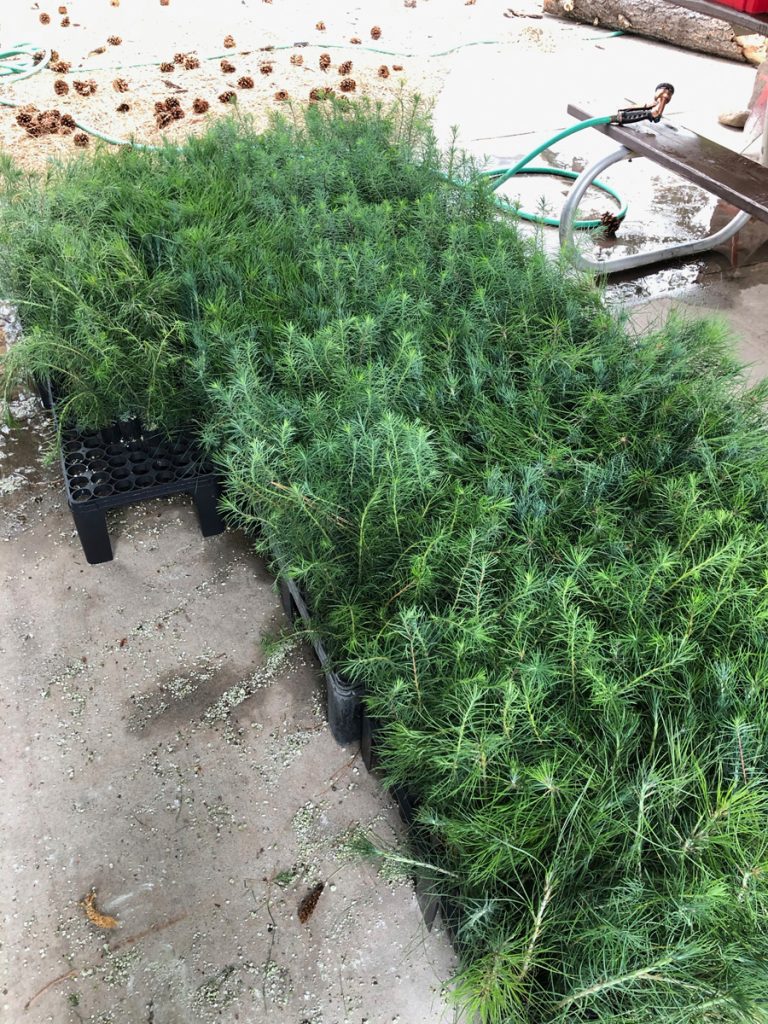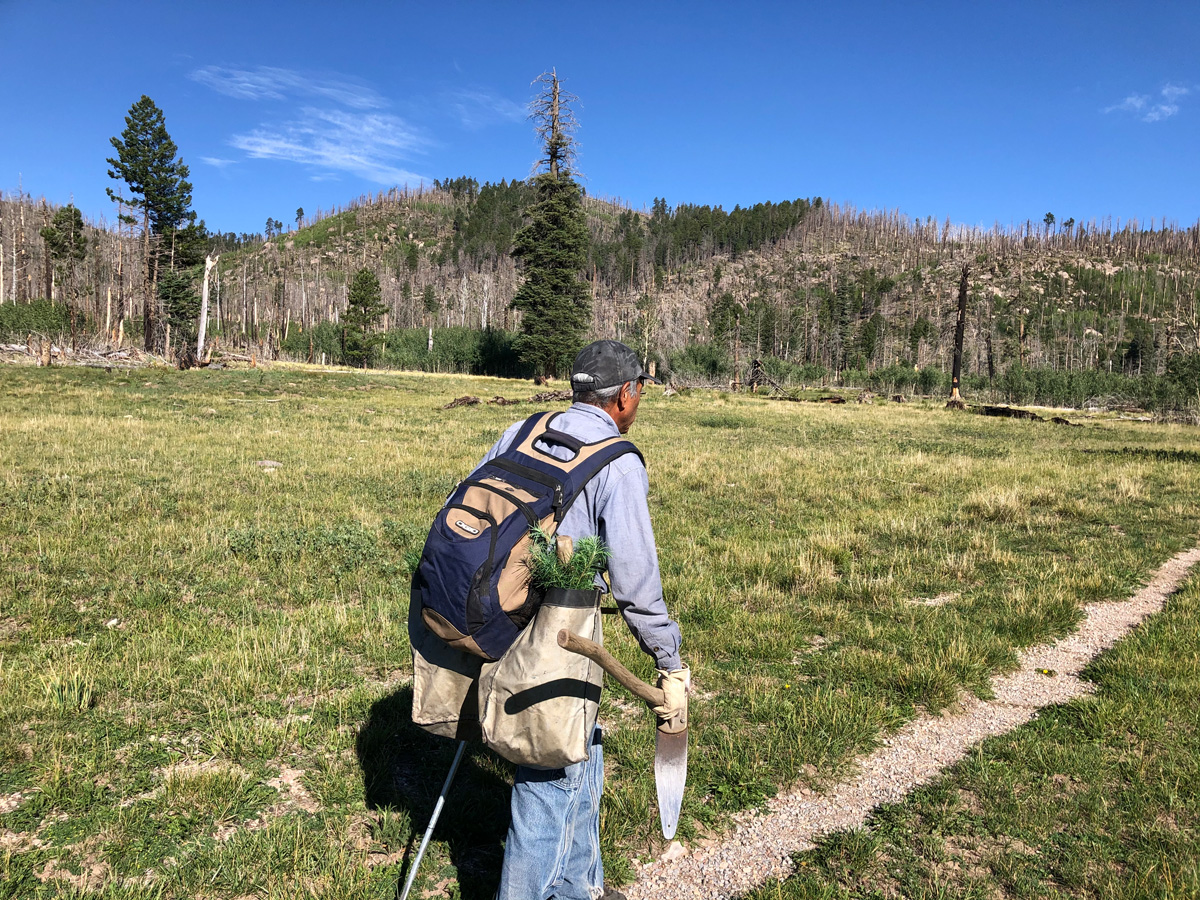
By The Nature Conservancy
On October 11, the Santa Clara Pueblo forestry department led a crew that planted over 33,000 seedlings near the Puye Cliff Dwellings west of Española to help restore the forest that was lost earlier this year to the Las Conchas Fire. The fire left almost no trees in the area and, without intervention, the land is unlikely to become the ponderosa pine and Douglas fir forest it had been.
Reforestation is one of the best tools in fighting Global Warming, so the seedlings were planted using advance climate models to help counteract its effects. The areas replanted are culturally important to the Santa Clara people (a Tewa group) and other Pueblo people and provide critical habitat for wildlife, included valued game animals like elk and turkey.
The seedlings were prepared by New Mexico State University John T. Harrington Forestry Research Center under the direction of Dr. Owen Burney. They were “drought hardened” by giving them as little water as possible during their early development. The Rio Grande Water Fund – led by The Nature Conservancy in New Mexico – supported the effort with a Climate Smart Adaptation Fund grant from the Wildlife Conservation Society. The Rio Grande Water Fund is a collaborative effort to thin 600,000 acres of forest at risk of fire over the next 20 years, now averaging 30,000 acres thinned annually. Restoration is a new part of their mission.




